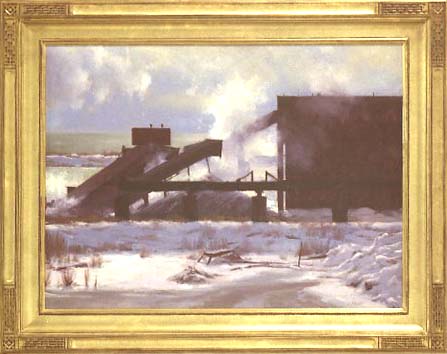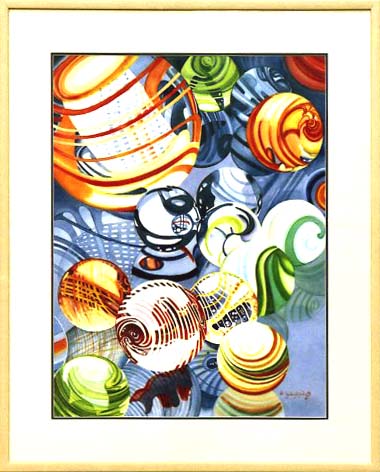State Fair Winners: Painting
Here's another in the series of State Fair Fine Arts profiles: on the painters Joe Paquet and Julie Allen.


Joseph Paquet
Grand Prize in oil, acrylic, and mixed media
“Lake Superior Taconite,” oil on panel
Joe Paquet makes his living by painting, and teaching students one day a week in his studio in St. Paul. He worked full time in advertising and design until four years ago, when he left the business to do plein-air painting exclusively. His gallery representation in Cape Cod, Charleston, and California sells enough of his work to free him from the need to do anything else. He travels often, and is thoroughly enjoying his life as a painter.
“I love the teaching,” he notes. “What I teach is very traditional, a serious discipline.” He uses an old technique, but, as he says, “I paint my time.” His industrial sites, grain elevators, and other Minnesota subjects sell well, even though they are unconventional subjects for a plein air painter. But it’s not always easy depicting them.
The painting here, for instance, was done on a blisteringly cold day, ten below zero, on the hillside at Silver Bay on the North Shore. Paquet was there with a group of painter friends, all staying in “a little fleabag hotel, ” and reveling in the sheer insanity of their mission. They drove up the shore, and as they topped the rise at Silver Bay the howling wind gave them serious pause; the group decided to head for the harbor where there’d be some shelter from the wind to work in. But when they passed the plant, Paquet says, “My heart just stopped—I was riveted. The steam rising, the backlighting, the beautiful composition of the scene—I knew if I didn’t do it I’d hate myself.” So he dropped off his friends, got out of the car and set up. “I did a field painting in that 30-mile-an-hour wind. When my hands stopped working I’d get back in the car again to warm up.”
Paquet works from field paintings, not from photographs. He says that these paintings are not “renderings; they’re constructed from symbolic marks. They’re not just pictures of something, when you go up close, they’re paint. The quality of the marks matters.”
He speaks also of the quality of the Minnesota landscape; it’s not easy to paint. You have to spend time with it, he says; it’s not spectacular like that of either coast. Quoting Rilke’s “Letter to a Young Poet,” Paquet notes that it’s what you give to your life that transforms it. The Minnesota landscape demands that you pay a certain kind of attention. The landscape’s subtlety suits him.
Julie Allen
Grand Prize, watercolor
“Marble Motion”
“I’m in love with round things, with spheres . . . “ So says Julie Allen, and her composition of the swirling glassy patterns of marbles bears this out. She grew up on a farm near Austin, Minnesota, playing with marbles and jacks, and her fascination for marbles continues—though soap bubbles and glass also appeal. Allen’s transparent colors and crisp outlines, as well as her mastery of complex compositional forces, make this work extraordinary.
Allen uses only pure transparent watercolor in her work; it’s important to her to stick to this purity of medium. She speaks with deep feeling of her love for it; watercolor, she says, is like “an elusive lover you can never have. It’s forever changing, you’re never done. Each painting is completely different, you can never do the same painting again.”
Allen is an old State Fair hand: her work has been juried into the show many times. She remarks on what a good venue it’s been for her. “I have clients who have seen my work at the Fair and have become longtime customers.” She sells her work through the Marshall Fields home store and through interior designers; a gallery in Florida also carries her work, though she does most of her own marketing. Her painting is now her livelihood.
She studied nursing in college, and didn’t get an art degree. But she’s learned in workshops and master classes over the years, and counts John Salminen, June Young, and Karen Frey among the artists who have been models and teachers for her. She’s a member of the Minnesota Watercolor Society, and relishes the fellowship and mutual learning that the Society provides.